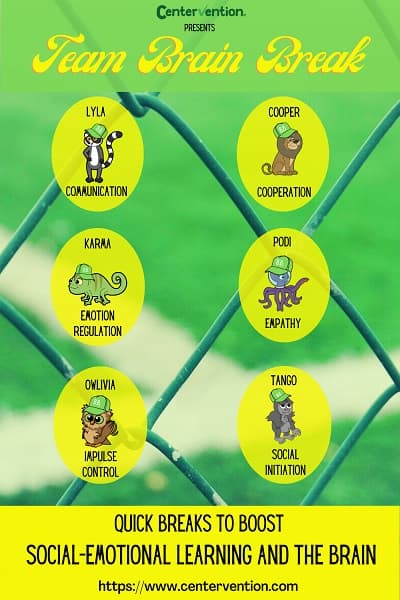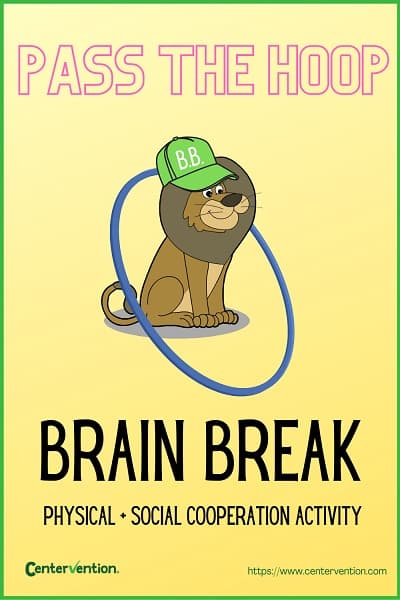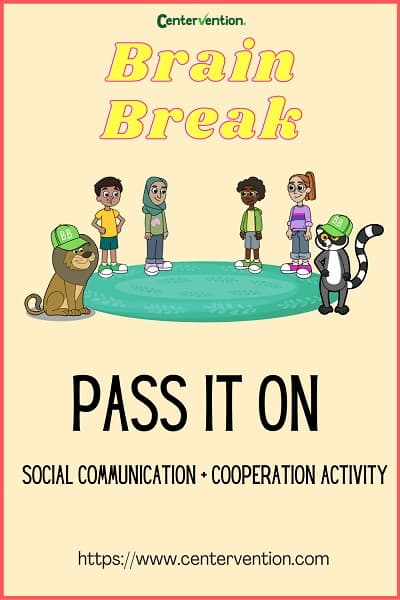“I need a break!”
Whether or not students say it out loud, this feeling can be palpable in the classroom when energy ebbs and flows between busy lessons. A head is nodding off on a desk, a chair rocks dangerously on hind legs, chattering peeps up from the back of the room, and the best answer you get to a simple review question is a vacant stare and a “huh?” Yep, it’s not your imagination—it’s time for a brain break.
Why Do Kids Need Brain Breaks?
While it may seem counterintuitive to further delay a lesson that lost momentum moments before, off-task behaviors are often a cry for help from students who need space to process, wiggle, or actively engage with one another. Brain Breaks are a popular solution for hitting the reset button in a classroom. These quick activities take little planning, typically last less than 5 minutes, and have numerous benefits that are backed up by science.
Several studies suggest that regular breaks reduce stress, prevent fatigue, foster peer connections, and boost work interest and engagement. Intentionally taking a quick time-out from lessons helps students get back on track and ready to learn which positively impacts academic progress.
How Do Kids Take a Brain Break?
It can be a good idea to intentionally plan a brain break mid-lesson, roughly every 20-30 minutes, though frequency can vary by age. When you plan ahead, you may avoid the slump of disengagement and can also seize an opportunity to get creative with the activity.
There are three general styles of brain breaks that all apply to the end goal of providing brief respite from rigorous learning while also nurturing social-emotional development.
- Physical Breaks allow students to re-energize after long periods of sitting or physical inactivity, and have also been found to improve student concentration and peer interactions while increasing academic achievement. These breaks may include brief bursts of common exercises such as running in place or jumping jacks.
- Mindfulness Breaks, on the other hand, help slow things down following high-energy activities or deep discussions. These are useful in calming and re-centering and provide time for processing after extended periods of receptive learning. Mindfulness Breaks have many benefits and are known to reduce stress, strengthen focus and attention, have positive impacts on social-emotional learning, and can also diffuse an array of behavioral issues. These strategies may include silent meditation, reflection or journaling, light stretching, or sensory experiences.
- Social Breaks are those which engage connectivity and collaboration. Not to be confused with unstructured recess, Social Breaks are intentionally crafted activities that foster teamwork, develop problem solving abilities, and support communication skills. Research suggests that collaborative learning leads to higher achievement and productivity, as well as greater social competence and self-esteem. These breaks can include mini-games, structured but relaxed conversations, or puzzles and problem solving.
While it’s a great practice to plan for Brain Breaks ahead of time, it’s also important to remember that students may need them more frequently than you anticipated. When energy seems off, survey the room and get comfortable with taking one minute mini-breaks. On a whim you can easily access prep-free strategies like hopping in place or taking slow deep breaths which allow students a moment to recharge or slow down. This small investment of time on the front end will sustain learning and engagement for the long run.
What Are Some Good Brain Breaks?
The two brain breaks below are great for days when the weather outside isn’t cooperating. In both cases, you will be helping your students expend a bit of energy while also improving communication and cooperation skills.
Indoor Recess: Pass The Hoop
If you’re noticing that students aren’t getting along, it might just be time for this group indoor recess activity that brings everyone back together.
Cooperative Play Activity
When attention wiggles and wanes it can be easy for classroom conversations to get derailed. Sounds like it’s time for a cooperative play activity.


